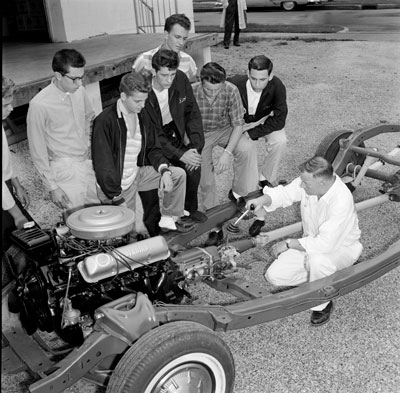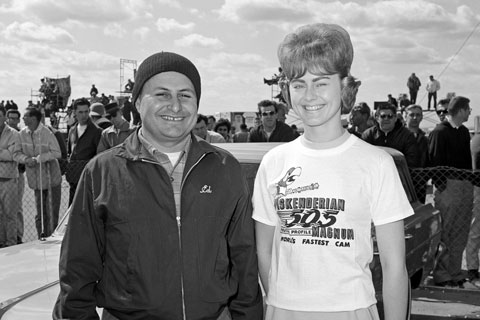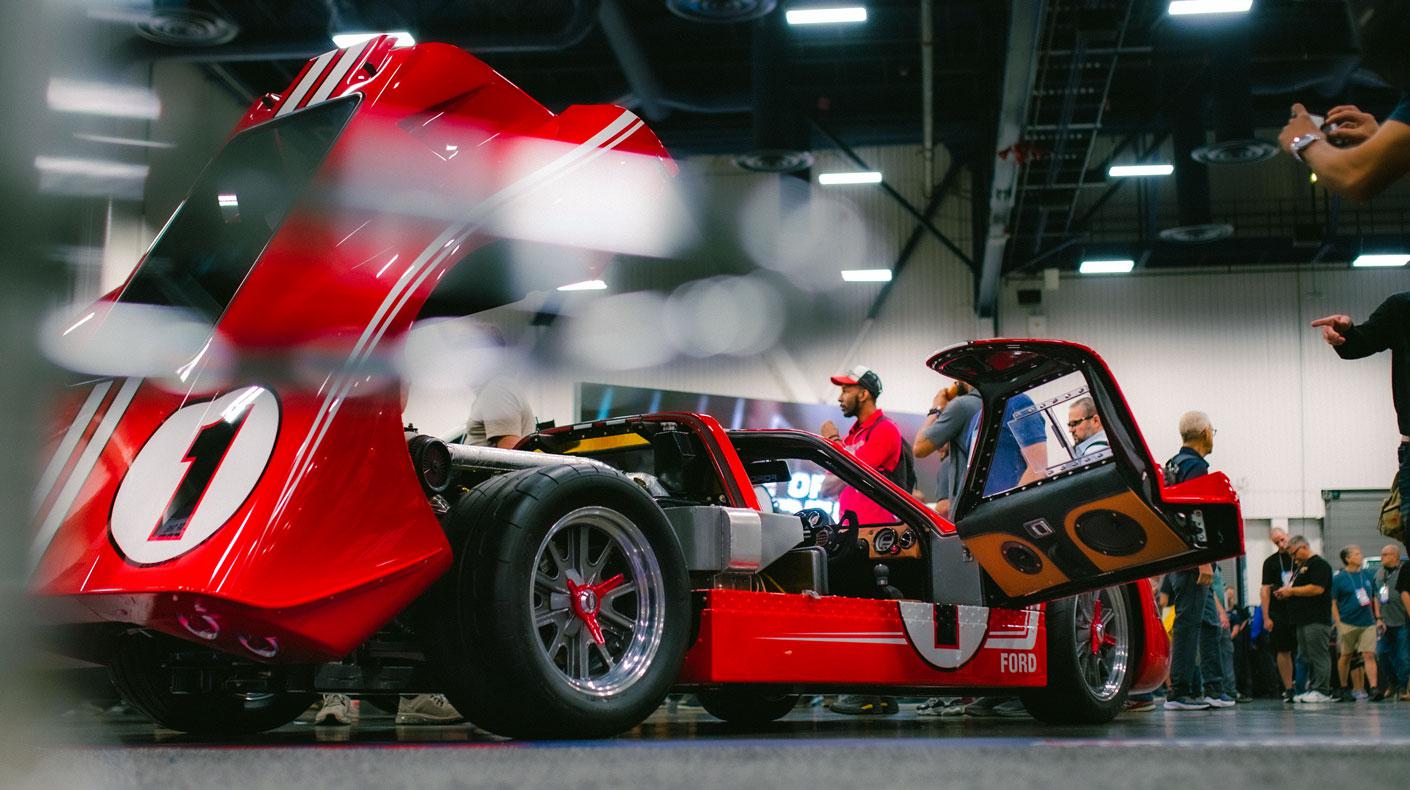SEMA News—December 2019
HERITAGE
By Drew Hardin
Chassis Tips for Draggin’ 1961 Style
Photography Courtesy Ray Brock, Petersen Publishing Company Archive
 |
Hot Rod Technical Editor Ray Brock was on hand to document the car club’s visit and explain why an automotive chemical manufacturer happened to have a late-model Ford display chassis at its headquarters. Brock wrote in an October 1961 article that Zecol “maintains a racing shop with three ’61 Ford stock cars to advertise and test their products under the most extreme conditions, stock car track racing on the Midwestern USAC circuit.” Though the company’s race efforts were stock-car oriented, a drag-strip chassis “was built up for display to assist the many young racing enthusiasts who daily stop by the Zecol shops to ask advice” from mechanics Newkirk and Harold Carlson.
Brock said that the “Zecol team was flush from a big win a few days earlier when their ’61 Fords had finished one-two in the important Milwaukee 200-miler with Eddie Sachs and Dick Rathmann driving.” The chassis he was showing to the club was originally a spare for the racing team “and was equipped with all the heavy-duty chassis components that are standard equipment with the 390-in., 375hp engine. Ford’s new four-speed transmission had just been installed to bring the chassis up-to-date.”
Newkirk had “painted up” the drag chassis “so that the special items could be easily identified.” Among them were components to help “wedge” the rearend for better launches: heavy-duty leaf springs with the fabric insulators removed from between the leaves and extra clamps to prevent spring wrap-up; service U-bolts that could be tightened further than the stock U-bolts for additional clamping force; export station wagon or Police Interceptor shock absorbers; and shims to raise the pinion snubber to reduce the distance between the snubber and the car’s body (to put extra pressure on the rear wheels). A 4.57 ratio was recommended for the Ford’s differential, but not a traction aid. A properly wedged chassis “will register better times without a limited-slip,” Brock said.
The front suspension was modified, too, with spacers from an air-conditioning-equipped car added to the top of the coil springs to raise the front “and help transfer weight to the rear on fast starts.” Likewise, “a pair of front shock absorbers should be borrowed from a car with 30–40,000 mi. on the odometer so that they are well worn and have less dampening action than new shocks. These limber shocks will permit the front of the car to raise high on acceleration and further transfer weight to the rear wheels.”
Tire selection is “a very important factor in the success of any drag racing machine,” Brock pointed out, adding that NHRA rules allow stock cars to run “the next size larger or smaller in tire width.” The recommendation was to go bigger in back—from 6.70x15 to 7.10x15—“to get more rubber on the ground.” Brock said “tires made of Butyl rubber have been proven far better than standard tires for maximum traction, so Atlas Bucron, Firestone Butylaire or other brands using Butyl rubber should be used.” In front, it was best to step down a size—to 6.40x15—“to provide the least amount of rolling friction.”
Other components got attention, too, from the front wheel bearings (“lightly packed with good wheel bearing grease”) to the brakes (to eliminate “all chances of dragging brakes”), and even the fan, as an optional fan with smaller-diameter blades was recommended.
“As you can see by the items we mentioned, ‘setting up’ a car to run successfully in the hot stock class requires a lot of work and plenty of ingenuity,” Brock wrote in closing. “You just don’t drive a car off the showroom floor and to the nearest dragstrip with the idea that you’re going to clean house.”
The young men gathered around the Ford chassis are members of the Vagabonds car club from Whitefish Bay, Wisconsin. On this particular July day in 1961, they have traveled to the headquarters of Zecol Racing Incorporated in Milwaukee to pick up some drag-racing tips. That’s Zecol mechanic Paul Newkirk with his hand on the transmission’s shift lever.






